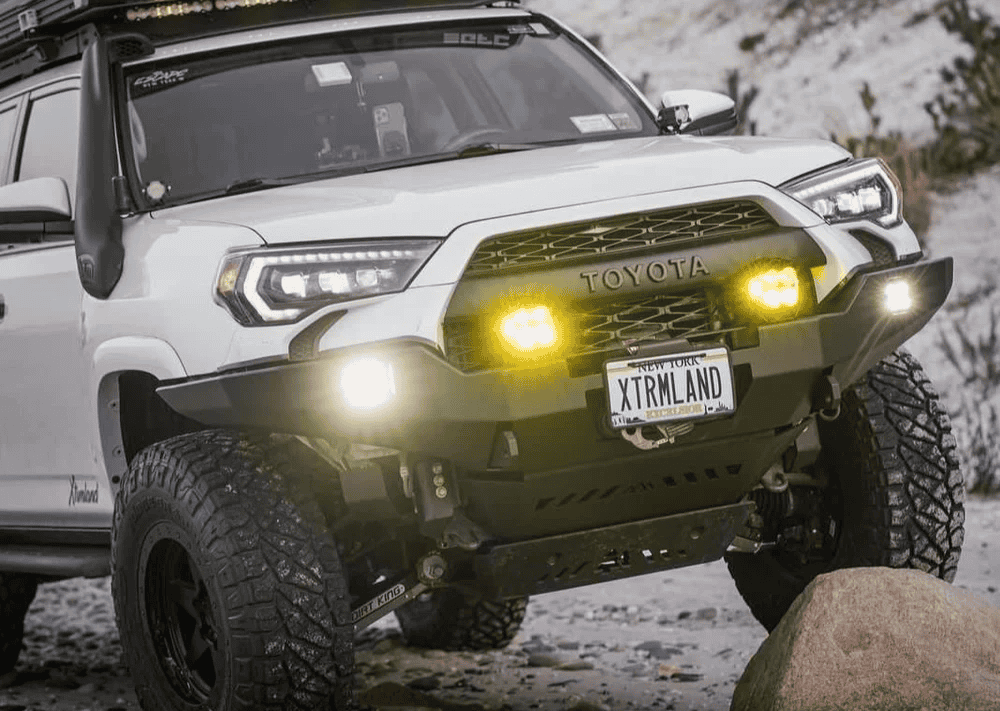Overland Vehicles

A strong electrical plan anchors any Defender 130 off grid build. Start with an energy budget by listing every load and daily run time. Fridge, water pump, lights, fans, heater controller, and device charging add up fast. The long body gives you packaging options, but the key is safe wiring, secure mounts, and serviceable placement.
A lithium house battery keeps weight low and usable capacity high. Pair it with a quality DC to DC charger so the alternator charges the house system while you drive. An inverter sized to real needs runs occasional loads like tools or a blender. Protect every circuit with fusing and use marine grade cabling with proper strain relief to handle trail vibration.
Under hood space on modern Defenders is tight, so many owners place a sealed battery box in the rear quarter or a drawer cavity. Keep heavy batteries low and forward to protect handling. A modular layout makes upgrades simple, whether you add a second battery or expand solar later.
The Defender 130 roof length welcomes multiple low profile panels. With a full length rack, two to four panels can often deliver two hundred to four hundred watts in real conditions. Use a smart MPPT controller, route cables through a waterproof gland, and leave space for cargo and a tent. Even with good sun, alternator charging remains important on cloudy trips with short winter days.
Monitor state of charge with a shunt based meter and set system alerts. Wire critical loads like a fridge and comms on dedicated circuits. Label everything. A tidy power bay with ventilation, drip protection, and access to fuses pays off when a trail fix is needed.
Water planning blends storage, filtration, and ease of use. Many owners mount a slim tank against the wheel arch, or split capacity between two smaller tanks for balance. A compact pump with quick disconnects feeds a faucet or rear sprayer. Add a carbon filter at the point of use and keep a gravity filter for backup.
Heat keeps the cabin comfortable and helps with drying gear. A compact fuel fired heater that sips from the vehicle tank provides steady warmth at altitude. Pair it with a roof vent or quiet fan for airflow. Cooking is simplest with a portable stove on a slide out platform, with heat shielding where needed and a safe storage location for fuel canisters.
Secure your tank with metal brackets and rubber isolation to prevent chafe. A fill port tucked inside the rear door limits dust ingress. Color code hoses for fill and outflow, and add a drain low in the system for winterizing.
A ventilated roof rack still allows a low profile fan. If the build includes a rooftop tent, place the fan over the galley area and add window vents for cross breeze. Keep electronics away from heater outlets, and route ducting with smooth bends to maintain airflow.
The 130 offers generous interior length. You can keep the second row and build a rear platform with drawers, or go rooftop with a hard shell tent. Either way, protect glass and trim with panels, and anchor all storage to the chassis or factory points. Soft bags for clothing nest well above drawers to keep weight low.
Trails demand armor and smart tire choices. The Defender 130 benefits from high sidewall tires on smaller diameter wheels to improve ride and puncture resistance. Skid plates for the front and underbody, plus rock sliders, guard critical components. A discreet winch mount maintains cooling and approach angle while adding self recovery.
Air suspension models can add lift through recalibration or spacers, but keep geometry and driveshaft angles in mind. Payload matters. Weigh the vehicle at each corner after the build and confirm you are within ratings. Distribute mass toward the center and avoid stacking heavy items high on the rack.
All terrain tires in the thirty three inch range often fit with proper offset and minimal trimming, delivering grip without stressing steering or braking. Air down responsibly with bead retention in mind and carry a fast inflator for reseating after rocky climbs.
Recovery points, a quality synthetic line winch, soft shackles, a snatch strap, traction boards, and a shovel form a capable kit. Mount boards low and outside for quick access, not buried under luggage. Practice safe rigging in a controlled setting before you need it.
Add weight in phases, test, then refine. A loaded fridge on the left can be countered by water on the right. Batteries near the center, spare parts over the axle, and tools low keep handling predictable across washboard and ruts.
With the plan dialed, it helps to work with a shop that understands system integration and the realities of remote travel. If you want a professionally engineered setup that keeps the Defender quiet, balanced, and serviceable, explore our OZK overland rigs. For component focused upgrades that align with this strategy, our custom overland upfit approach covers power, water, storage, and armor without guesswork. Curious about the philosophy behind our builds and the experience you can expect? Learn more at Why choose OZK Customs.
We design complete rigs and targeted upfits that match how you travel, protect the factory platform, and stay within ratings. Tell us your route, your gear, and your timeline, and we will build a Defender 130 that feels calm on highway miles and ready when the pavement ends.
Ready to turn your Defender 130 into a trail proven, off grid machine? Our team plans and builds complete overland systems, from power and water to protection and storage. Tell us how you travel and we will engineer a clean, quiet setup that just works on every trip.
ADDRESS:
6159 E Huntsville Rd, Fayetteville, AR 72701
PHONE:
(479) 326-9200
EMAIL:
info@ozkvans.com